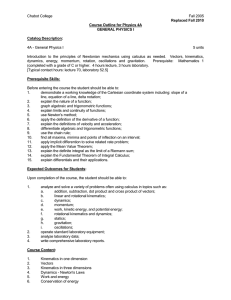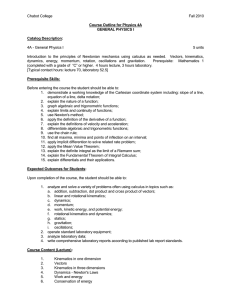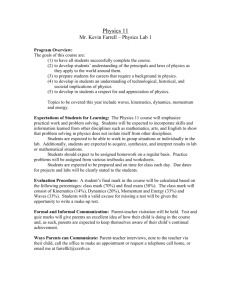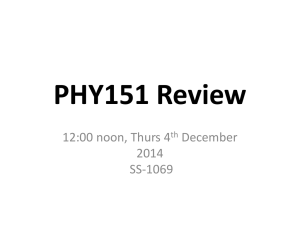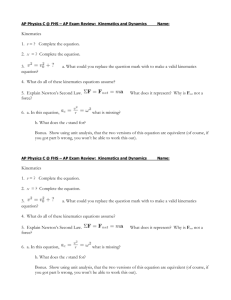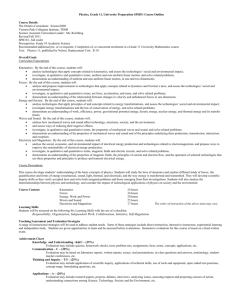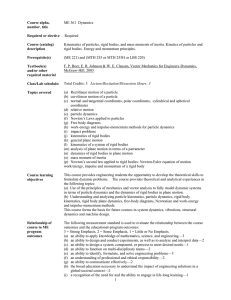Chabot College Fall 2001 4A - General Physics I
advertisement
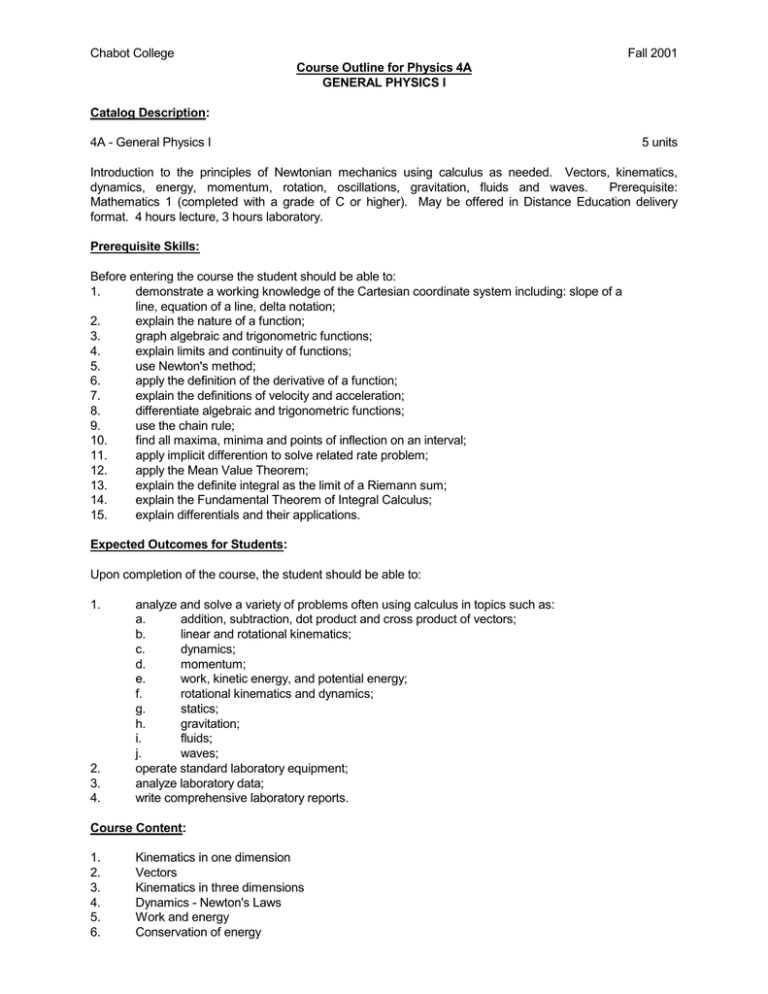
Chabot College Fall 2001 Course Outline for Physics 4A GENERAL PHYSICS I Catalog Description: 4A - General Physics I 5 units Introduction to the principles of Newtonian mechanics using calculus as needed. Vectors, kinematics, dynamics, energy, momentum, rotation, oscillations, gravitation, fluids and waves. Prerequisite: Mathematics 1 (completed with a grade of C or higher). May be offered in Distance Education delivery format. 4 hours lecture, 3 hours laboratory. Prerequisite Skills: Before entering the course the student should be able to: 1. demonstrate a working knowledge of the Cartesian coordinate system including: slope of a line, equation of a line, delta notation; 2. explain the nature of a function; 3. graph algebraic and trigonometric functions; 4. explain limits and continuity of functions; 5. use Newton's method; 6. apply the definition of the derivative of a function; 7. explain the definitions of velocity and acceleration; 8. differentiate algebraic and trigonometric functions; 9. use the chain rule; 10. find all maxima, minima and points of inflection on an interval; 11. apply implicit differention to solve related rate problem; 12. apply the Mean Value Theorem; 13. explain the definite integral as the limit of a Riemann sum; 14. explain the Fundamental Theorem of Integral Calculus; 15. explain differentials and their applications. Expected Outcomes for Students: Upon completion of the course, the student should be able to: 1. 2. 3. 4. analyze and solve a variety of problems often using calculus in topics such as: a. addition, subtraction, dot product and cross product of vectors; b. linear and rotational kinematics; c. dynamics; d. momentum; e. work, kinetic energy, and potential energy; f. rotational kinematics and dynamics; g. statics; h. gravitation; i. fluids; j. waves; operate standard laboratory equipment; analyze laboratory data; write comprehensive laboratory reports. Course Content: 1. 2. 3. 4. 5. 6. Kinematics in one dimension Vectors Kinematics in three dimensions Dynamics - Newton's Laws Work and energy Conservation of energy Chabot College Physics 4A, Page 2 Fall 2001 7. 8. 9. 10. 11. 12. 13. 14. 15. Systems of particles Collisions Kinematics of a rigid body Dynamics of a rigid body Static equilibrium of a rigid body Simple harmonic motion Gravitation Fluid mechanics Waves Methods of Presentation: 1. 2. 3. 4. Lecture and discussion. Problem solving. Demonstrations. Laboratory experimentation. Assignments and Methods of Evaluating Student Progress: 1. Typical Assignments a. Weekly homework/question sets b. Laboratory reports (individual and group), including computer-based data acquisition and analysis c. Special exercise worksheets, problem review, and computer simulations and tutorials; both individual and group activities and research papers d. Participation in email and web-based instruction, discussion and tutorials. Internet research on topics dealing with physics and its applications to technology. 2. Methods of Evaluating Student Progress: a. Quizzes b. Midterm examinations c. Final examination Textbook(s) (Typical): Physics for Scientists and Engineers Volume I, Serway and Beichner, Harcourt College Publisher, 2000 Special Student Materials: None. Revised 12-1-00
